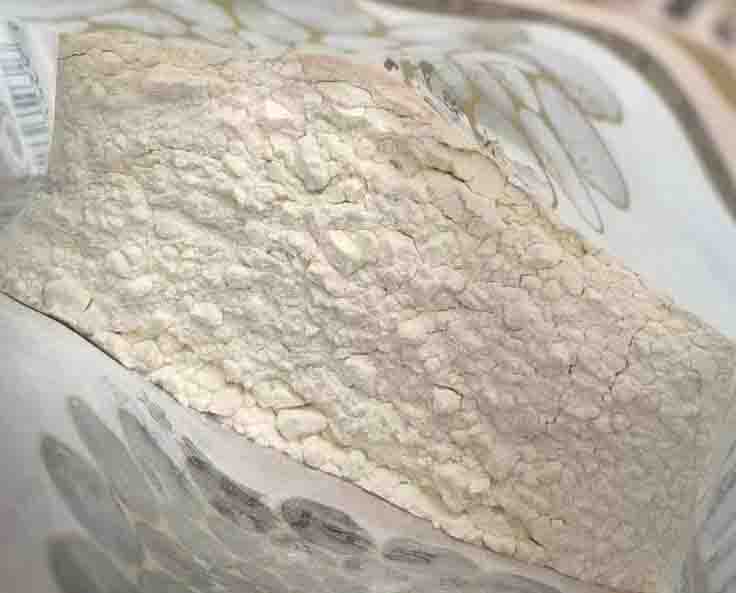Hectorite Clay | Organoclay
Hectorite Exploration and Identification: Lithium in Sedimentary Rock
Because of its exceptional qualities and the significant insights it gives into geological formations, the hectorite clay mineral has attracted the attention of geologists, researchers, and drilling oil makers. Let’s go on an adventure to learn more about hectorite, discovering its similarities and differences with organoclay and its uses and applications compared to bentonite clay.
About Hectorite
Smectite is the main type for this particular clay mineral. Its fluidity and volume both increase when combined with water. It also has the ability to stop sediments from settling. Natural hectorite is a pale mineral found in relatively few locations across the globe.
It is then processed in a wet process to produce a very pure additive. Because of its affinity for water, hectorite clay can be employed alone or in conjunction with polymers or dispersants to tailor the fluidity of water-based mixes to a variety of applications.
Classification of Hectorite Clay
Smectite is the classification for hectorite clays. Like bentonite, it belongs to the phyllosilicates smectite class. Phyllosilicates are layered minerals with a sheet-like structure.
In drilling, it is a good suspending agent.
Due to its makeup and crystal structure, it is called a trioctahedral smectite. The word trioctahedral refers to how octahedral cations are arranged in the grid structure of clay. In hectorite, most of the octahedral spots are filled with magnesium ions (Mg) and, to a smaller extent, aluminum ions (Al).
Chemical Properties of Hectorite
The chemical formula for the mineral Hectorite is Na0.3(Mg,Li)3Si4O10(OH)2. It can also be written as Na0.3(Mg,Li)3Si4O10(F,OH)2nH2O, which is the symbol for this hectorite mineral. The International Mineralogical Association or IMA has given it the code Htr.
Hectorite is known for its unusual makeup, which includes sodium, magnesium, lithium, silicon, oxygen, hydrogen, and sometimes fluorine. It usually forms in places with a lot of clay, and water molecules are often part of its makeup.
Elements like titanium, aluminum, iron, calcium, potassium, and chlorine are often found in it. Small amounts of these elements may be found in the crystal makeup of hectorite.
Physical Properties of Hectorite
It looks thick, dull, or earthy, which means it doesn’t shine. It is not completely clear. Has a variety of colors, like white, cream, and pale brown, which often have a speckled look. Has hardness that comes between 1 and 2 on the Mohs scale, and a fingernail can easily scratch it..
Other Language Names for Hectorite
In Latin, it is referred to as arcilla hectorita. In German, you’ll find it mentioned as Ghassoulit Hectorit. In Italian, it retains its original name hectorite. In Spanish, it is known as Ghassoulita hectorito.
In-situ Composite Formation by Polymerization on the Hectorite or other Clay Materials
Organoclays, which are what hectorite clay is, are also modified clays. These are good for systems that don’t have a lot of polarity, while short-chain or aromatic products that work best for systems with medium to high polarity. The kind of clay used also affects how well something works.
Organoclay made from bentonite and organoclay made from hectorite both had similar quaternary ammonium components, but they were made from different clays. The organoclay was mixed with the glue and solvent blend and then spread out. A polar activator was then added to help the clay platelets form hydrogen bond bridges. The color was added, and the mixture was mixed up well. The features of the paint that came out showed that both organoclays were finely ground and thickened.
Formation and Properties of Clay-Polymer Complexes
Organoclays made from hectorite clay and bentonite are often used as the clay part of clay-polymer mixtures. These clay materials are made up of layers and have a lot of surface area, which lets them work well with polymer chains.
Clay-polymer complexes made from these clays usually start with the clay particles being spread out in a suitable solvent. Organoclay is made by first treating the clay with organic chemicals, like alkyl quaternary ammonium ions, to change its surface qualities and make it work better with the polymer. The polymer is then added to the clay mixture. The polymer chains then move through the clay layers using different processing methods, such as mechanical mixing or solution blending.
.
Products Containing This Ingredient
- Water Treatment
When painting, extra paint that gets into the air and falls to the ground is often stored in water in spray cabinets that spray water. A polymer is used in a flocculation process to clean this water and separate the paint particles that are floating in it. Adding hectorite clay, on the other hand, can make this process much more effective.
When hectorite clay is added to the system, it sticks to the paint drops and makes strong fixing points. This interaction between the clay and the paint makes a strong base for the polymer to pass between the clay particles, clumping the paint particles together. It is important for this technology to work well that the hectorite clay platelets have a lot of surface area.
- Cosmetic & Personal Care
One of their main jobs of hectorite in cosmetics is to keep the ingredients from settling and separating into different phases. This keeps the ingredients spread out evenly throughout the mixture. This is very important for makeup and other personal items.
Organoclays made from hectorite clay not only help keep things stable, but they also improve the general user experience. Have a shear-thinning flow pattern. When shear forces are applied to them, like when a product is applied or rubbed into the skin, they become less thick. It makes product easy to spread the product evenly and smoothly.
The hectorite gel that these organoclays make gives makeup and products a nice feel and structure. It gives the product a luxury feels and can help make it thicker, smoother, and more stable.
- Ceramic Glazes
It has many benefits when used to make glazes for ceramics, which makes it a great choice for this purpose. The glaze’s quality and performance are helped by the fact that it works well and doesn’t have any paramagnetic elements.
One of the best things about hectorite clay in pottery glazes is that it keeps things from settling. When added to the glaze recipe, hectorite clay keeps solid pieces from separating and falling, so the glaze stays the same consistency throughout. This is important for getting the same results every time when glazing, and it helps avoid problems like uneven covering or clumping.
- Oil Drilling
It stays very stable even at high temperatures, usually above 150°C. Because of this, they are very useful when making digging muds for oil-field work. When temperatures rise a lot in deep oil reserves, bentonite-based organoclays may not work as well because their structure starts to break down.
Because of the way hectorite clay is made, the organoclay is more stable, which makes it a good choice for high-temperature hectorite uses. When drilling deep below the surface, where temperatures can be very high, it is very important to keep the drilling mud in good shape and working well. Dense materials like barites need to be kept in suspension for many drilling tasks, and hectorite-based organoclays do a great job of giving them the qualities they need.
- Construction
Hectorite clay could be used instead of cellulose-based goods. These are usually used to make plaster. When hectorite clay is added to plasters, it does two important things: it makes the plaster less likely to sag and it makes it easier to apply.
One of the best things about hectorite clay is that it thins out when it flows. This means that when the clay is put under shear stress, like when it is pumped or applied by hand, its viscosity goes down. This makes it easier to handle and apply. This makes it easier to pump the plaster, which saves money on energy costs. Also, applying it by hand to walls becomes less hard and time-consuming, saving workers time and effort.
Hectorite Clay | Packing Details
Zhejiang Camp-Shinning’s Hectorite-based organoclay is a solid answer for both small-scale and large-scale commercial needs.
25Kg/bag or customized Kraft complex interior with PE
Zhejiang Camp-Shinning provides hectorite-based organoclay, a premium product made to accommodate different industrial demands. The product is meticulously packed in kraft complex interiors with PE to maintain its integrity during transit and storage. It is available in 25kg bags or in a variety of packaging choices that may be customized.
800Kg/Pallet or 1MT/Pallet Wood Pallets or Plastic Pallets
For larger quantities, the organoclay is conveniently packed in 800kg/pallet or 1MT/pallet, using either wood pallets or plastic pallets, depending on specific requirements.
Hectorite Clay | 16MT/20FCL with pallet 25MT/40FCL with pallet
By maximizing container loads, Zhejiang Camp-Shinning assures effective logistics. We work to provide their clients with a smooth and affordable supply chain by having a load capacity of 16MT in a 20-foot container (20FCL) when using pallets or 25MT in a 40-foot container (40FCL) when utilizing pallets.
We sincerely welcome you to inquire about our products, understand our products and applications, and obtain our samples to achieve testing on them.


